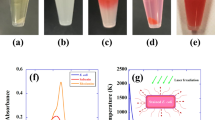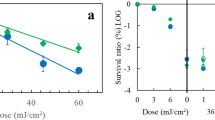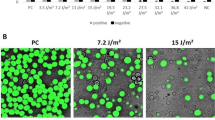Abstract
COLI-BACTERIOPHAGE of the 'T' group1 are inactivated at a logarithmic rate by ultra-violet light. Some of these phages can be reactivated inside bacteria that adsorb more than one inactive phage particle2. I recently observed another type of reactivation of ultra-violet irradiated phage, namely, reactivation upon exposure to visible light in the presence of bacterial cells (photo-reactivation). Since this phenomenon may cause serious misinterpretations of results obtained in working with irradiated phage, it may be useful to report it at this early stage of its investigation.
This is a preview of subscription content, access via your institution
Access options
Subscribe to this journal
Receive 51 print issues and online access
$199.00 per year
only $3.90 per issue
Buy this article
- Purchase on Springer Link
- Instant access to full article PDF
Prices may be subject to local taxes which are calculated during checkout
Similar content being viewed by others
References
Delbrück, M., Biol. Rev., 21, 30 (1946).
Luria, S. E., Proc. U.S. Nat. Acad. Sci., 33, 253 (1947). Luria, S. E., and Dulbecco, R., Genetics (in the press).
Kelner, A., Proc. U.S. Nat. Acad. Sci. (in the press).
Gratia, A., Ann. Inst. Pasteur., 57, 652 (1936).
Author information
Authors and Affiliations
Rights and permissions
About this article
Cite this article
DULBECCO, R. Reactivation of Ultra-Violet-Inactivated Bacteriophage by Visible Light. Nature 163, 949–950 (1949). https://doi.org/10.1038/163949b0
Issue Date:
DOI: https://doi.org/10.1038/163949b0
This article is cited by
-
The serendipitous dawn of DNA repair
Nature Reviews Molecular Cell Biology (2020)
-
New Vision in Photoprotection and Photorepair
Dermatology and Therapy (2019)
-
Small molecule inhibitors of DNA repair nuclease activities of APE1
Cellular and Molecular Life Sciences (2010)
-
A brief history of the DNA repair field
Cell Research (2008)
Comments
By submitting a comment you agree to abide by our Terms and Community Guidelines. If you find something abusive or that does not comply with our terms or guidelines please flag it as inappropriate.



